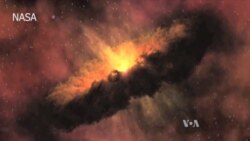After a five-year journey, the spacecraft Juno is nearing its destination, the planet Jupiter, where it will enter polar orbit and start sending back data back July 4. Scientists at Jet Propulsion Laboratory, the California mission control center for this NASA project, say Juno will pierce the dense clouds of the gas-covered giant and offer insights into its origin and nature of both the planet and our solar system.
Launched in August, 2011 from Cape Canaveral, Florida, Juno is powered by giant solar panels and will map the entire surface of Jupiter during 37 orbits over 20 months, revealing information on the planet's origin, structure, atmosphere and magnetic forces.
The craft will endure a harsh environment, says project scientist Steve Levin. “Jupiter is the biggest, baddest planet in the solar system,” he said, with “a bigger magnetic field, bigger aurora, bigger radiation belts, bigger gravity. Everything about it really is bigger.”
Radiation from the planet is intense, requiring a 170-kilogram radiation vault, which Levin says is “a huge titanium box” to shield the sensitive instruments.
The craft is like an armored tank, said principal investigator Scott Bolton, “and we're diving in from above, trying to thread the needle between the radiation belts and Jupiter's atmosphere.”
Mini solar system
That atmosphere is made up mostly hydrogen and helium, like the sun, and scientists say that beneath the visible clouds lies an ocean of compressed liquid hydrogen. They do not know where Jupiter has a solid core, but say that learning more about the atmospheric composition, including its levels of water, will offer important insights on the planet.
They say Jupiter is a kind of miniature solar system, circled by four large moons and dozens of smaller ones, and that learning more about it will help us understand planetary systems.
People around the world can follow the mission online by downloading software called Eyes on the Solar System from the NASA website.
On the night of July 4, California time, Kevin Hussey of NASA's educational outreach team says “you're going to be able to witness this historic event, the Juno spacecraft being captured by Jupiter into orbit.” In the months that follow, the public can follow the mission's progress. In February, 2018, the Juno craft will plunge into the Jovian atmosphere to burn up like a meteorite, its mission completed.
The Juno mission is named for a goddess, who, in Roman mythology, could see through clouds to learn what her husband, the god Jupiter, was up to. Scientists say the spacecraft will, in a similar way, reveal the mysteries of the planet Jupiter.











